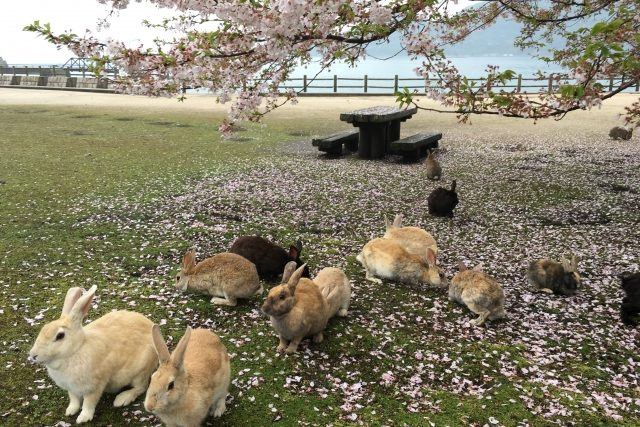In our planet's oceans lie islands where animals rule the roost. These remote and often isolated lands have become havens for a variety of creatures, shaping unique ecosystems where one species reigns supreme. But how and why do these animal kingdoms come to be? And what happens when one species becomes too dominant?
In the natural world, the emergence of one dominant species on an island can be attributed to a variety of factors. Often, these islands provide unique ecological niches that favor the proliferation of particular animals. For example, the absence of natural predators, abundant food sources, or geographic isolation can create conditions conducive to the unchecked growth of a single species.
Pig Island, Big Major Cay, Bahamas:

Home to a population of special swimming pigs that have captured the hearts of visitors worldwide. These beach-loving hogs have learned to survive and thrive by swimming to passing ships in search of food.
Cat Island, Tashirojima, Japan:

Cats outnumber humans on this picturesque Japanese island, where feline residents are revered as good luck symbols. Tourists flock to Cat Island to bask in the presence of these furry companions.
Rabbit Island, Ōkunoshima, Japan:

Once a site of wartime secrecy, Ōkunoshima is now known for its abundant population of friendly rabbits. These adorable creatures hop freely among the ruins of a former poison gas factory, drawing visitors from far and wide.
Assateague Island, Maryland, United States (Wild Ponies):

Uninhabited and untamed, Assateague Island is home to a population of wild ponies that roam its sandy shores. Legend has it that these ponies are descendants of survivors from a shipwreck, adding to the island's mystique.
Seal Island, False Bay, South Africa (Cape Fur Seals):

A rocky outpost off the coast of Cape Town, Seal Island teems with life as Cape Fur Seals frolic in the surrounding waters. However, their idyllic existence is threatened by the presence of Great White Sharks, who lurk in the depths.
Monkey Island, Cayo Santiago, Puerto Rico (Rhesus Monkeys):

Cayo Santiago is home to a thriving population of Rhesus monkeys, descendants of those brought to the island for scientific research. Today, these monkeys roam freely, providing valuable insights into primate behavior.
Snake Island, Ilha de Queimada Grande, Brazil (Golden Lancehead Vipers):

Known as Snake Island, this Brazilian landmass is infamous for its population of Golden Lancehead Vipers. These deadly snakes have adapted to their island habitat, thriving in the absence of natural predators.
The unchecked expansion of one species can have detrimental effects on the island ecosystem. Overpopulation can lead to the depletion of resources, competition for food and territory, and ultimately, disruption of the delicate balance between predator and prey. Without natural checks and balances, the ecological harmony of the island can be thrown into disarray, with cascading effects on plant life, other animal species, and even the physical landscape.
In the case of Pig Island in the Bahamas, the swimming pigs have thrived in part due to the absence of predators and the availability of food from passing ships. While their presence has become a tourist attraction, it also highlights the potential consequences of unchecked population growth. Similarly, on Snake Island in Brazil, the proliferation of Golden Lancehead Vipers has altered the island's ecosystem, creating a perilous environment for other species.
As stewards of these fragile ecosystems, it is essential to recognize the importance of maintaining biodiversity and preserving the delicate balance of nature. By understanding the factors that contribute to the dominance of one species and the potential consequences of overpopulation, we can work towards sustainable conservation practices that ensure the long-term health and vitality of these unique island habitats.
